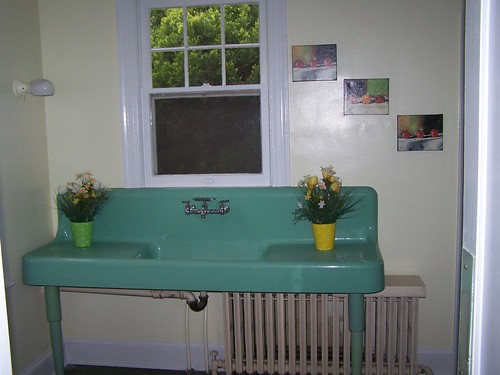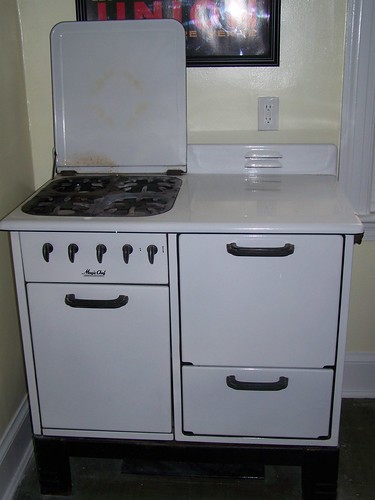If this house could talk program, Cambridgeport neighborhood, Cambridge, Mass.
 The National Trust for Historic Preservation Preservation Forum News has an article, "If This House Could Talk…: Connecting Neighbors through Their Buildings," about a community history program in a Cambridge, Mass. neighborhood, Cambridgeport. People put up signs in their yards, telling facts about their houses in both 2009 and 2010, as part of a neighborhood history day.
The National Trust for Historic Preservation Preservation Forum News has an article, "If This House Could Talk…: Connecting Neighbors through Their Buildings," about a community history program in a Cambridge, Mass. neighborhood, Cambridgeport. People put up signs in their yards, telling facts about their houses in both 2009 and 2010, as part of a neighborhood history day.This is an interesting program. I make the point all the time that if we don't educate people about the history of buildings/their community, how can they be expected to understand and appreciate why buildings (and their historic character and architectural details) should be preserved?
- Cambridge (Mass.) Historical Society
What are some of the interesting things about your house? For ours, I think this stuff is interesting:
- built in 1929 on two lots (later the lots were combined into one lot) by the Richardson family, white, who built the house to live in it
- we found some package wrapping paper from the Kann's department store addressed to Mrs. Richardson, in the attic floorboards
- sometime in the late 1930s or early 1940s the house was sold to the Woolfolk's, an African-American family (it's a pain to research old directories, but I'm looking forward to the release of 1940 Census data for our block, which will be sometime next year)
- the house was designed by an architect although it has similarities to bungalow kit houses
- there have been only 4 owners of the property in 80 years, and the 3rd owner lived in the house starting as an adolescent, inherited the house from her parents, and died still living there at the age of 95 (so is that three owners?)
- still has original kitchen sink and bathtub, both seafoam green
- we have a 1930s stove, but it wasn't the original kitchen stove, but it may have originally been in the basement
- while most of the house was cleared off, we have a few artifacts, such as a placard explaining how to fill the long gone coal bin, wooden car battery cases, a section of the Washington Times Herald from the 1950s, an old issue of Ellery Queen Mystery Magazine, and a thermometer from Bergmann's Dry Cleaners


Labels: civic engagement, historic preservation, local history, urban history



1 Comments:
Great information. This works great for me. Thanks for sharing this :)
Post a Comment
<< Home